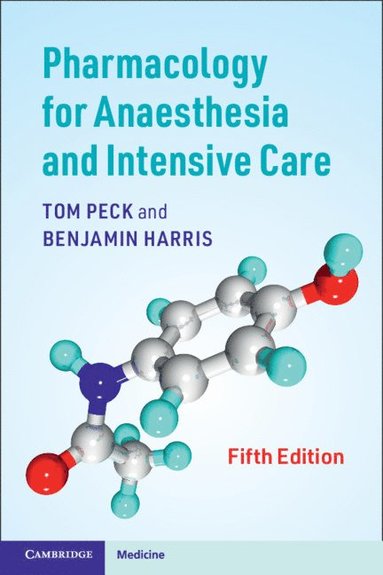
- Format
- Häftad (Paperback)
- Språk
- Engelska
- Antal sidor
- 382
- Utgivningsdatum
- 2021-02-26
- Upplaga
- 5
- Förlag
- Cambridge University Press
- Medarbetare
- Harris, Benjamin
- Illustratör/Fotograf
- Worked examples or Exercises
- Illustrationer
- Worked examples or Exercises
- Dimensioner
- 231 x 196 x 18 mm
- Vikt
- Antal komponenter
- 1
- ISBN
- 9781108710961
- 636 g
Pharmacology for Anaesthesia and Intensive Care
- Skickas från oss inom 7-10 vardagar.
- Fri frakt över 249 kr för privatkunder i Sverige.
Passar bra ihop
De som köpt den här boken har ofta också köpt Foundations for Health Promotion av Jane Wills (häftad).
Köp båda 2 för 1096 krKundrecensioner
Recensioner i media
'This outstanding book differentiates itself from others through its effective use of figures and diagrams that enhance learning. It is comprehensive and provides sufficient detail for the use of these medications. The information is not so overwhelming as to render it forgotten after reading. The inclusion of new anticoagulants and their reversal and the update on antibiotics make this new edition necessary.' Robert R. Gaiser, Doody's Notes
'... an invaluable resource for anyone, both doctor or nurse/ODP working in anaesthesia and intensive care. Its well-written explanations on the topics offer easy to understand insight which will only benefit the reader and lead to a greater depth of knowledge.' Daniel Morgan, The Journal of Perioperative Practice
'A pleasant surprise for the reader will be how easily these subsections flow as the authors keep the more detailed and in-depth information accessible and interesting by associating the concepts to relevant drugs ... This book is useful for trainees preparing for examinations and for experienced practitioners as a shelf reference; it is well organised so that specific topics or drugs can be individually reviewed.' Daniel Pulsipher, British Journal of Anaesthesia
Övrig information
Thomas Peck is a Consultant Anaesthetist at the Royal Hampshire County Hospital in Winchester and is also an Honorary Consultant Anaesthetist at University Hospital Southampton. Benjamin Harris is a Consultant in Anaesthetics and Intensive Care Medicine at the North Hampshire Hospital in Basingstoke.
Innehållsförteckning
Preface: Foreword by Anthony Absalom; Section I. Basic Principles: 1. Drug passage across the cell membrane; 2. Absorption, distribution, metabolism and excretion; 3. Drug action; 4. Drug interaction; 5. Isomerism; 6. Pharmacokinetic modelling; 7. Applied pharmacokinetic models; 8. medicinal chemistry; Section II. Core Drugs in Anaesthetic Practice: 9. General anaesthetic agents; 10. Analgesics; 11. Local anaesthetics; 12. Muscle relaxants and reversal agents; Section III. Cardiovascular Drugs: 13. Sympathomimetics; 14. Adrenoceptor antagonists; 15. Anti-arrhythmics; 16. Vasodilators; 17. Antihypertensives; Section IV. Other Important Drugs: 18. Central nervous system; 19. Antiemetics and related drugs; 20. Drugs acting on the gut; 21. Intravenous fluids, minerals and nutrition; 22. Diuretics; 23. Antimicrobials; 24. Drugs affecting coagulation; 25. Drugs used in diabetes; 26. Corticosteroids and other hormone preparations; Index.


